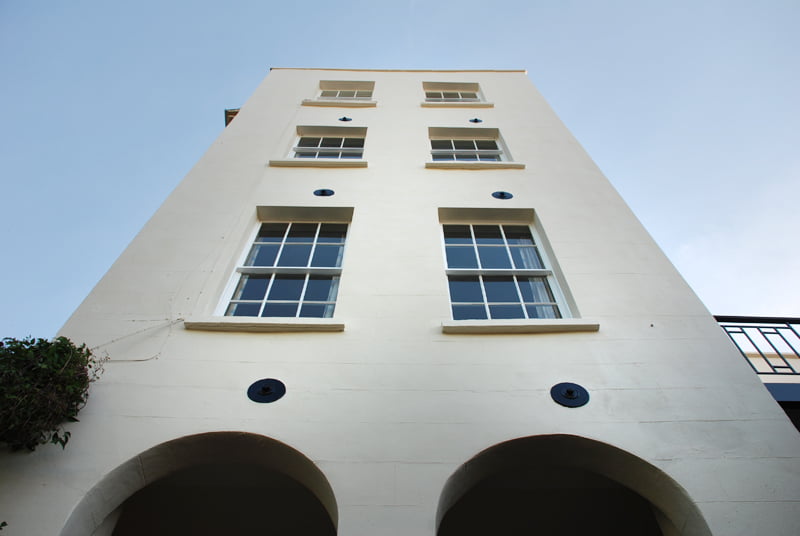Windows and Doors
Windows and Doors
Windows form a large part of a building and give much of its character! They let in light but they are vulnerable to breakage, accidentally or deliberately. They can usually be opened for fresh air but can be a security risk. Hence they need to be lockable with a key, to be “approved” by insurance companies. They can also allow heat to escape from the building.
On a viewing, you can easily see whether window locks are present . Again, doors need to be provided with locks that are approved to a BS standard.
Window Frames
The simplest test to tell whether new frames are required? Open and close the windows in every room whilst you are viewing. This will take minutes to perform but will indicate the likelihood of a bill for replacement – from £400 per window depending on the size. Yes, even on newer builds – as one minute into this video of our surveys in Bradley Stoke shows! https://youtu.be/1FENY2nJ24Y
There are many shapes and sizes of window, in a variety of materials. Genuine Georgian windows had small panes because glass was difficult to make. The Victorians found new methods of firing glass and so large panes, often in sash windows, became fashionable.
Wooden Frames
Into the 1960s, window frames were made of wood.Older timber frames do offer good thermal performance and can give a long service life, assuming careful maintenance has been carried out. However, they are prone to decay. Sometimes decay is visible as rotting wood. Sometimes fillers have been used. Don’t be afraid of gently prodding, to test the timbers. The filler often looks smoother than the surrounding timber.
Metal Frames
In the 1960’s, steel window frames were sometimes installed, often known as Crittall after the manufacturer. These are normally single glazed with very thin frames. Use a magnet to tell if the frames are steel. These frames perform very badly thermally and normally have a good coating of mould to show that. These should be replaced.
Aluminium frames were used in the 1980’s. These are lightweight and do not rust. They may have a small brown-coloured layer sandwiched in their construction. This acts as a thermal break to prevent condensation. If this is not present, replacement is certainly necessary.
As this older double glazing was a lot thinner, replacement is normally required anyway as it is not feasible to upgrade the glass.
UPVC Frames
The early forms of UPVC were often single chamber or extruded solid plastic,hence older UPVC windows often do not perform well thermally. Newer UPVC windows have multiple extruded chambers. These act as thermal pockets to make sure that they insulate the interior from the outside world. Combined with e-coatings, this gives one of the best performing arrangements available for the cost.The viable life of UPVC window frames is generally reckoned as 25 years.
Since 2002, new window installations should be “self-certified” by FENSA or CERTAS or in some instances Building Control will sign them off.
Ask the vendor or agent when the windows were last replaced. Are there any guarantees? If 2003 or later, ask if the relevant certifying documentation is present.
Glass
Single glazing is simply a single pane of glass.If this is the case, it usually indicates considerable age of a window installation. They allow a large amount of heat to leave the building and sums for replacing them should be budgeted. The reduction in heating bills should eventually pay for this alone! Large panes of glass can also be dangerous if unmarked.
Depending on the age of the installation, double glazing may be e-coated and toughened. We use some very special laser equipment to determine if this is the case,as can be seen on this link https://youtu.be/3fsDmGnaJjY . You will not be able to do this yourself, so look for the basics. Is there moisture (often looking like raindrops) in between the double glazed panes? If so, the seal to the double glazing has blown. These can seldom be repaired effectively and replacement is then required. This seal failure can often be as a result of pressure from the masonry, so look around these areas for cracks or distortion of the walls.
Doors
Again, doors may be timber, metal or UPVC, with or without glazed panes. The frames can warp, the locks can be ineffective. The hinges can sag. Replacement UPVC doors can cost upwards of £500, much more for French doors or bi-fold doors. So do make sure you check them by opening and closing them.
While antique glass in doors, particularly entrances and hallways, is very attractive, it can be a safety hazard. It is unlikely to be toughened so is easily damaged by impact. If you have small children, do bear this in mind!

